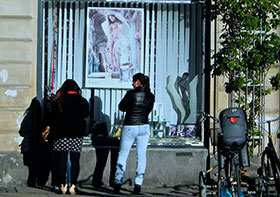HIV/AIDS epidemic in Europe: sexual transmission of HIV

WHO/James Hammond
Sexual transmission of HIV occurs through heterosexual contact and among men who have sex with men. Unprotected anal or vaginal sex puts people at greater risk of HIV.
Sex workers are particularly vulnerable to HIV/AIDS and are difficult to reach for HIV testing, prevention, treatment and care. Their work is often stigmatized and they may be exposed to violence, with little power to negotiate with their clients to use condoms.
Progress in addressing sexual HIV transmission
Between 2010 and 2012, 15 countries in the European Region reduced sexual transmission of HIV by 5% or more. While this represents a positive trend, only 3 countries are close to the European target of a 50% reduction by 2015. Sexual transmission increased in eastern and central Europe and decreased in the western part of the Region.
Typical modes of sexual transmission of HIV vary in the Region. The most common mode in the east is transmission from men who inject drugs to their female partners; in the west, it is transmission through sex between men or with migrants from countries with generalized HIV epidemics.
Similarly, condom use varies between population groups, ranging in 2012 from 88% among sex workers to 56% among men who have sex with men and 42% among people who inject drugs.
WHO’s support to European countries
WHO/Europe supports European countries in preventing the sexual transmission of HIV. This work mostly comprises translating global guidelines on prevention and treatment of HIV and other sexually transmitted infections and disseminating them to audiences including sex workers, men who have sex with men and transgender people.
Progress report for 2014 Regional Committee
The 2011 WHO Regional Committee for Europe adopted the European Action Plan for HIV/AIDS and requested the WHO Regional Director for Europe to report on its implementation to the 2014 session. This report will describe the progress made and challenges remaining.



